#fairytales and war
Text
Edmund Dulac's Fairy Tales go to War
Jstor Daily published an article with the catchy title "Edmund Dulac's Fairy Tales go to War". Of course I had to read it. The original article is here if you want to check it out, but I'll still copy-paste it below because it's crazy info. (And given it is quite long I will put two thirds of it under a cut)
Edmund Dulac’s Fairy Tales Go to War
One of the best-known illustrators of the “golden age of children’s gift books,” Dulac was also a subtle purveyor of Allied propaganda during the Great War.
By: S. N. Johnson-Roehr and Jonathan Aprea ; December 16, 2022
Once upon a time, there was a young artist named Edmund Dulac, who built his early reputation on his illustrations for J. M. Dent & Company’s 1905 edition of Jane Eyre. Almost instantly, he became a leading name in the book arts, producing illustrations for the Brontë sisters and popular magazines. Annual exhibitions of his drawings and paintings at the Leicester Galleries, London, drew the attention of both the European and American art world. In 1910, critic Evelyn Marie Stuart, writing for Chicago’s The Fine Arts Journal, described his work as “rich with poetry and imagination, and strong in the possession of that decorative element which renders a picture universally pleasing.” His drawings were like "things seen in a vision or a mirage; or traced by the fancy of a child in the lichens on the wall, the water discolorations upon a ceiling, or the light shining through a broken crumpled shade; or, even like the things we try to decipher in the leaping flames and glowing embers of an open fire—many of these delightful sketches suggest to our fancy in some detail a variety of objects."
Dulac’s themes tended toward the fantastical—scenes from the Arabian Nights and Omar Khayyam’s Rubáiyát—with roots in the Pre-Raphaelites and not far removed from the work of Arthur Rackham and Kay Nielsen.
Born in France and naturalized as a British citizen in 1912, Dulac understandably awarded his loyalties to the Allies during the Great War. To support the war effort, he contributed his art and design skills to several charity books, including Princess Mary’s Gift Book and King Albert’s Gift Book, both published in 1914. If there remained any doubts as to his feelings about the Axis powers, they were surely erased when he published Edmund Dulac’s Picture-Book for the French Red Cross in 1915, with its cover proclaiming “All profits on sale given to the Croix Rouge Française, Comité de Londres.”

Even more convincing—and more inventive—was his use of fairy tales to not just further his charitable efforts but to possibly encourage the United States to join the war. Published in 1916, Edmund Dulac’s Fairy-Book was a subtle but persuasive example of wartime propaganda. Subtitled “Fairy Tales of the Allied Nations,” it included Dulac’s own adaptations of folk tales gathered from the nations fighting with Great Britain: France, Russia, Italy, Belgium, Serbia, Japan, and China.
Below, courtesy of the Minneapolis College of Art and Design, are reproductions of some of the illustrations from Edmund Dulac’s Fairy-Book, accompanied by brief explanation of each story.

Snegorotchka: A Russian Fairy Tale
Snegorotchka (more commonly transliterated Snegurochka), the “The Snow Maiden,” is a recurring character in Russian folklore, playing various roles, from child to adult, in stories bounded by the winter and spring seasons. By the late nineteenth century, Snegurochka had blended fully with the traditions of Christmas, often serving as a helper to Grandfather Frost (Ded Moroz).
In Dulac’s version of a common tale, Snegurochka is a girl made from snow, brought to life to add joy to the waning years of a childless couple. An elderly man and women all but will the girl into being as they shape a tiny body of snow in the woods. Snegurochka leaps to life, filling their home and souls with warmth throughout the winter. Tragically, the little girl disappears with the heat of spring weather, leaving the parents bereft.
Another version of the Snegurochka tale formed the basis of a play by Alexander Ostrovsky, which was subsequently adapted into an opera by Rimsky-Korsakov.

The Buried Moon: An English Fairy Tale
Sometimes known as The Dead Moon, The Buried Moon highlights the dangers of living in the bog country of Northern Europe.
Traveling through a bog, a personified Moon becomes entangled in magical, malevolent branches. After some struggle with “all the vile things” that love darkness (witch-things, bogle-bodies, creeping things, and the Scorpion King, to name a few), the Moon finds herself buried deep in the mud, held down with a black stone.
Of course the humans miss the Moon, lamenting her failure to appear in the sky on schedule, but who even knows where to search for her? Even the Wise Woman of the Mill can’t see any trace of her. Fortunately, just before her entombment, the Moon had managed to briefly shine her light to guide a lost and wandering human out of the treacherous marsh. Remembering this moment, the man spreads the word. Emboldened by the Wise Woman’s words of encouragement as well as the Lord’s Prayer, the local people march to the bog, fight off the Horrors of the Darkness, and rescue their beloved Moon

White Caroline and Black Caroline: A Flemish Fairy Tale
Folklorist Antoon Jozef Witteryck collected White Caroline and Black Caroline (Wit Karlientje en Zwart Karlientje) and included it in his 1899 Old Flemish Folktales (Oude Westvlaamsche volksvertelsels), an annotated version of which was republished by Hervé Stalpaert in 1946. The story can also be found in the Annales de la Société d’Emulation pour l’Étude de l’Histoire & des Antiquities de la Flandre (Bruges, 1889).
White Caroline and Black Caroline depends on the familiar figure of the evil stepmother, a woman who loves her ugly daughter (Black Caroline) more than her beautiful stepdaughter (White Caroline). Everyone and everything, from townspeople to lambs to dancing dogs, love White Caroline and equate her beauty with good. But the mother prefers her own daughter, noting “Black Caroline was so ugly;—but she was good all the same!”
And indeed, Black Caroline is good. Her mother tries no fewer than three times to murder White Caroline, and each time, Black Caroline intercedes. Poison thorns in the pillow, poison in her meatball dinner, an “accidentally” falling millstone—none manage to kill White Caroline, thanks to Black Caroline’s quick thinking.
The abrupt entrance of White Woman, queen of all the water and the woods, brings the murder attempts to a close. Not surprisingly, White Woman also loves White Caroline and promises to give her whatever she wishes—beautiful grapes, a dress of silk, a nice sailboat. Luckily, White Caroline is also good: she wishes to have Black Caroline with her. More than that, she wishes they could look alike. The White Woman has an idea:
“Little white feathers appeared on their shoulders and spread until they were entirely covered; and there they stood together, two beautiful white swans! And ever after they swam up and down on the peaceful water and no one could tell one from the other.”
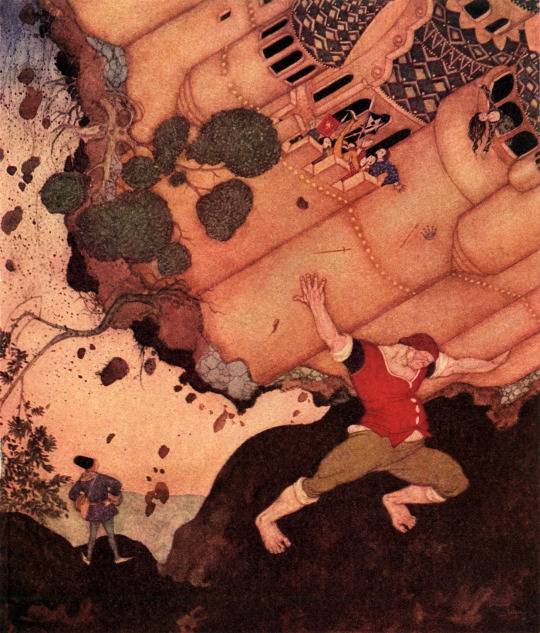
The Seven Conquerors of the Queen of the Mississippi: A Belgian Fairy Tale
While there may be an actual fairy tale underpinning The Seven Conquerors of the Queen of the Mississippi, the story’s title reveals Dulac’s probable agenda. It takes no large leap of the imagination to read the “seven conquerors” as Great Britain, France, Russia, Italy, Serbia, Japan, and China, all seeking an alliance with the Queen of the Mississippi—the United States—on the fields of Belgium.
The story is straightforward and structurally repetitive—each conqueror swears an oath of loyalty, and their individual strengths combine to win the Queen and kill the King (hello, Kaiser Wilhelm II).
Dulac, or some unnamed collaborator, has penned a verse that cuts through the first half of the tale with a modern rhythm and vocabulary.
“Will you travel with me, my pippy?”
“Oh! Whither away? To Botany Bay?”
“But no; to the far Mississippi,
Where a Queen—tooral-ooral-i-ay—
Is waiting for what I’m to say.”
“I am yours! And the bounty?”
“Either here or in Botany Bay!”
‘Will you travel with me, my pippy?”
“Oh! Whither away? To Rome or Pompeii?”
“But no; to the far Mississippi:
There’s a Queen of great beauty that way,
And there’s no one but Cupid to pay.”
“I am yours! And the bounty?”
“Name your price: it shall be as you say.”
And so on. Travel with me, my pippy!

The Serpent Prince: An Italian Fairy Tale
The Italian poet Giambattista Basile collected The Serpent Prince (sometimes translated as The Enchanted Snake) in the seventeenth century, including it in The Pentamerone: Lo cunto de li cunti (The Tale of Tales). Folklorist Andrew Lang drew upon Basile’s version for The Green Fairy Book (1892).
Dulac has created his own prefatory material for the familiar story, opening with the popular nursery rhyme:
The old woman who lived in a shoe,
Who had so many children she didn’t know what to do,
allegedly “lived about the same time in another part of the country” even though The Serpent Prince was collected in Naples.
As the story goes, a forester’s wife, Sapatella, finds a tiny serpent in her firewood. Childless, Sapatella is startled but amenable when the serpent offers himself up for adoption (“she was a kind-hearted woman and very, very lonely”).
The serpent grows—as children do—and soon demands a wife. And not just any wife! The serpent must marry the king’s daughter. Surprisingly, the king agrees to meet this demand. Or does he? He will give his daughter in marriage only if the adopted son-serpent can turn all the fruit in the royal orchards to gold.
It’s not clear why anyone is surprised that a talking serpent can wield the magic necessary to turn fruit into gold. Nor is it clear why the king would think the serpent would fail at any additional challenge placed before him. Turn the walls into diamonds and rubies? No problem. Turn the entire palace into gold? Absolutely (“not gold plate either: it was all solid gold of the purest kind.”). The king is forced to cede the battlefield. The princess will marry the serpent.
Of course, the serpent is really an enchanted prince, and here you would think the story would end: the affianced are wed, their kingdoms allied. But thanks to an additional foolish act by the king, the prince is again enchanted (and worse), and only the princess can save him. But will she be able to outwit the wily fox standing between her and her beloved?
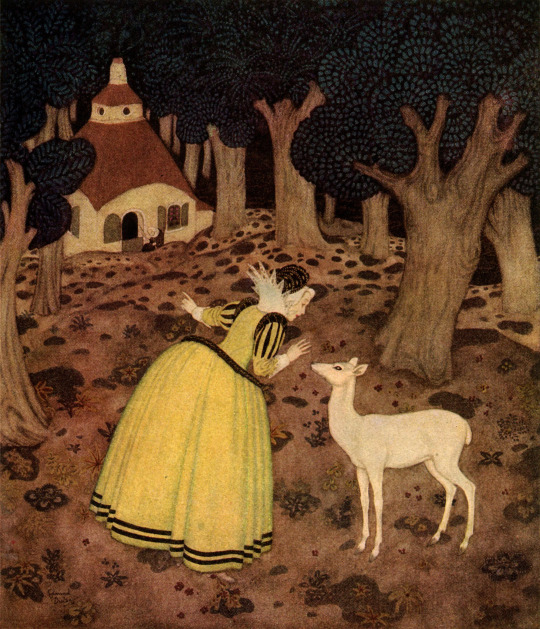
The Hind of The Wood: A French Fairy Tale
Dulac offers a faithful retelling of The Hind in the Wood (La Biche au bois, also translated as The White Doe or The Enchanted Hind), written by Marie-Catherine Le Jumel de Barneville, Countess d’Aulnoy. A talented and creative storyteller, Countess d’Aulnoy gave us the very words “fairy tale” in 1697, when she published her first collection under the title Les Contes des fees (Tales of the Fairies).
Though the titular hind is the star of the story, the scene opens with an unhappy, childless queen encountering a talking crayfish. Though “hearing a big Crayfish talk—and talk so nicely too—was a great surprise to her,” the queen listens carefully to the crustacean.
The reward for her attentiveness is a kingdom transformed. Beneath her feet appears “a carpet of violets, and, in the giant cedars above, thousands of little birds, each one a different colour, [singing] their songs; and the meaning of their melody was this: that cradle, woven by fairy fingers, was not there for nothing.” Soon she will be a mother!
A troupe of fairies gather around the suddenly expecting queen and ask that she welcome them on the day of birthing so they can give special gifts to the babe, who will be named Désirée. And on that special day, the queen indeed remembers to bid them come to the palace. Sadly, she neglects to invite the talking crayfish (who is really the Fairy of the Fountain) to the celebration.
Curses. But only small ones, in the scheme of things. The Fairy of the Fountain warns the royal parents to keep Princess Désirée from seeing daylight until she turns fifteen. That’s all.
Alas, the Warrior Prince lies on his death bed. Just a portrait of Désirée is enough to make him fall in love and abandon his plans to marry Black Princess. Yet he cannot see her—she will not be fifteen for a few more months. To save the Warrior Prince, Désirée agrees to travel with her two ladies-in-waiting by darkened carriage to his kingdom.
Unfortunately, one of those ladies-in-waiting, Long-Epine, is a traitor. She slits the cover of the carriage, exposing Désirée to daylight. Just a drop of sunlight turns the princess into a dazzling white hind. She instantly runs off into the forest. And that is the curse: by day, a doe; by night, a lonely princess.
The Warrior Prince wanders this very forest and soon spots the white deer. Annoyed that the animal tries to keeps its distance from him, he looses an arrow and pierces her flank. He’s sorry! Especially when he finds out the hind is his beloved, enchanted.
She isn’t enchanted for much longer, however. The Prince, even knowing all, loves her. And that is enough to break the spell
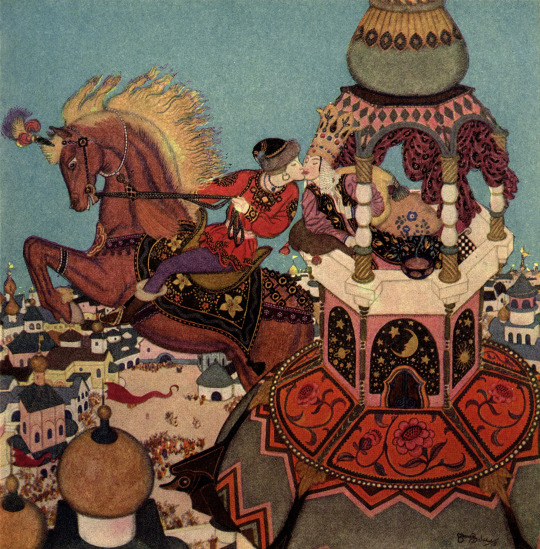
Ivan and the Chestnut Horse: A Russian Fairy Tale
Variations of Ivan and the Chestnut Horse are abundant in Russian folklore. Sometimes Ivan rides a chestnut horse, sometimes a dun. A common version of the story, known as Sivko-Burko, was collected by A. N. Afanas’ev in the mid-nineteenth century. Included in Jack V. Haney’s comprehensive The Complete Folktales of A. N. Afanas’ev (Tale #179, Vol. II), this version gives Ivan a magic black steed.
Ivan and his brothers have just committed themselves holding daily prayers over the grave of their recently departed father when they hear that Princess Helena the Fair has decided to wed. To win her favor, her suitor must leap on horseback to the top of the shrine on which she sits, kissing her as he flies through the air.
Ivan, the youngest of the siblings, offers to take on the burden of graveside prayer for a week so his brothers can curl their hair and train their horses for the challenge. One week stretches to two, and then to three. The brothers ignore their filial duties to dye their mustaches. So much attention is paid to their appearance that they even neglect to feed their horses.
And yet, when the day of the leaping contest arrives, the older brothers dash away on their mounts, leaving Ivan alone to pray and weep over his father’s grave.
It was thus that two out of three brothers miss their father’s resurrection. Shaking himself free of the damp earth, the father offers to help his youngest son. He begins to call out in a loud voice—one time, two times, three times. Ivan discovers his father is summoning a beautiful chestnut horse!
Yes, this is the enchanted steed that will take Ivan to the shrine of Helena the Fair, where—after two failed attempts—it rises to the leap, allowing Ivan to press his lips to those of the princess “in a long sweet kiss, for the chestnut horse seemed to linger in the air at the top of its leap while that kiss endured.”
After summoning the steed, Ivan’s father immediately vanishes. No matter, because Ivan is soon welcomed to supper with the father of his bride, Princess Helena the Fair.

The Blue Bird: A French Fairy Tale
The Blue Bird (l’Oiseau Bleu) is another tale that comes to us by Countess d’Aulnoy. Though there are many variants of the story found across Europe, scholar Jacques Barchilon notes that d’Aulnoy’s version is remarkably robust, appearing in a French Canadian collection, “word for word the version of Mme d’Aulnoy’s with all details,” as late as 1960. Andrew Lang also included it in The Green Fairy Tale Book.
Our story opens with a rich but miserable king. He’s inconsolable, having only recently become a widower. Hoping to comfort him, his courtiers present him with a woman dressed in mourning clothes and possibly crying even louder and longer than the king himself.
Finding solace in their similar sorrows, they decide to wed. Each brings into the marriage a daughter from their first marriage. The king’s daughter: “one of the eight wonders of the world,” the young and lovely Florine. The new queen’s daughter: “neither beautiful nor gracious,” the young Truitonne, with a face like a trout and hair “so full of grease that it was impossible to touch it.”
The queen loves Truitonne much more than she loves Florine, which wouldn’t matter if the king didn’t love the queen so much that he cedes to her every wish. For instance, he allows her to dress Truitonne in jewels and Florine in rags when Prince Charming appears at court. Despite the heavy-handed costuming, however, Prince Charming only has eyes—and love—for Florine.
The queen schemes. The queen plots. She enlists maid, frogs (“for mind you, frogs know all the routes of the universe”), and fairy godmothers. And yet the Prince will not be deflected from his plans to be with Florine. Finally, exasperated with his stubbornness, Truitonne’s fairy godmother turns the prince into a blue bird—for seven years!
It’s not too bad, at first. In bird form, the prince finds it easier to woo Florine—until the queen discovers that he flies to her window every night. Wielding her dark magic, Truitonne’s fairy godmother sends the blue bird to his nest to die.
Fortunately, every bad fairy seems to be balanced by a good fairy. This bright character finds the dying blue bird in his nest and heals him. It doesn’t seem to help much—the queen is determined that Truitonne will marry the prince even if only by trickery and deception.
The queen’s shenanigans never seem to end—this is a long fairy tale—but eventually the universe, or at the least the good fairy, finds a way to bring Prince Charming and Florine together.

The Friar and the Boy: An English Fairy Tale
The Friar and the Boy, also known as Jack and his Stepdame, reaches back to the poetry of medieval England. In volume three of Remains of the Early Popular Poetry of England (1866), William Carew Hazlitt records a c. 1585 London imprint of the chapbook verse that underpins the modern version of this tale.
The story begins with Jack, a young lad wronged by his stepmother. She starves him, she yells at him, she altogether doesn’t care for him.
One day, sent to the fields to watch the sheep, Jack encounters a hungry old man. Jack’s lunch isn’t much, as his stepmother is loathe to feed him decent food, but he gives it to the stranger. In return, the old man gives Jack three wishes.
Wish one: a bow and arrow, charmed such that the target will never be missed. Wish two: a pipe, its magic strong enough to make anyone dance who hears its tune. Wish three: an enchantment that will turn his stepmother’s harsh words into laughter.
Jack instantly puts his granted wishes to work. When his stepmother begins to scold him, her words turn to laughter. She laughs herself sick. When the Friar is sent to chastise Jack for his impudence, he ends up dancing through the brambles to Jack’s piping. Soon Jack has the entire village dancing to his tunes!
Alas, his poor old father begs for a rest. Jack loves his father, so he ceases to play. Not surprisingly, the Friar takes advantage of the pause to have Jack called before the Judge, “be-wigged and severe.”
The Friar makes his case: “the prisoner here has a pipe, and, when he plays upon it, all who hear must dance themselves to death, whether they like it or not.”
Intrigued, the Judge asks to hear this so-called Dance of Death. Jack is happy to oblige and takes up his pipe to play. Soon everyone in court is on their feet, dancing madly to the tunes. Even the judge joins in, “holding up his robes and footing it merrily.” He’s a believer, but he soon asks the boy to stop.
Jack agrees, but only if everyone promises to treat him properly.
“I think,” says the Judge, “if you will put your pipe away, they will consent to an amicable arrangement.”
Court is adjourned.
The End.
#edmund dulac#fairytale illustrations#fairytale art#french fairytales#british fairytales#english fairytales#edmund dulac's fairy book#world war I#wwI#fairytales and war#fairytale propaganda#russian fairytales#belgian fairytales#flemish fairytales#edmund dulac's fairy-book#italian fairytales#political fairytales
9 notes
·
View notes
Text


The Battle of the Frogs and Mice, from Up One Pair of Stairs of My Bookhouse by Willy Pogany (1920)
#willy pogany#art#illustration#golden age of illustration#1920s#1920s art#vintage art#vintage illustration#vintage#hungarian art#hungarian artist#books#book illustration#childrens books#fairy tale#fairy tales#fairytale art#mice#war#classic art
3K notes
·
View notes
Text
Robin landed on the roof next to him and Bruce could already feel the headache building. They were looking down on a young blond man with pointed ears and a large halberd on his backriding on a white horse. The guy looked like he had come straight out of a fairytale. He knew that if this was a new rogue Damian would argue about keeping the horse. Actually he would probably want to keep the horse even if he wasn't a rogue.
Deciding the guy had gotten close enough they swooped down to confront him. The man, startled, stopped his horse and pulled the large halberd off his back. He held it in front of him, as if in warning. The man looked wary of them but not afraid. They stared at eachother for a moment before the man spoke in a language neither Batman not his Robin knew.
---
Link was having a wierd day. He had literally just saved Princess Zelda a week ago (and for the second time) when he encountered some kind of demon in black and white. The Master Sword glowed in the demons presence which was all Link needed to know before chasing after the being. The thing, looking like a teen in odd clothing that reminded him of links own rubber suit, bolted into a green portal it had created.
Not hesitating he had his horse leap into it. And now he was in a strange place with no sign of the demon. After getting attacked by a man yelling in a language he didn't recognize, he switched out his sword for a halberd for that extra reach on horseback and continued on his way, leaving the unconscious man on the road side behind him.
This place was odd. Parts of some walls would light up, showing images of people and places he didn't know along with a written language he didn't recognize. He came across many people who looked at him oddly...or at least he thought they were people. They looked like Hylians but most of them were taller than the average Hylian and to Links horror they had short rounded ears. How could they hear thier gods with such tiny ears?
He was scared, but he carried on anyway. Eventually he gets confronted by someone dressed as a monster and a child. They manage to settle thier...dispute?...without violence so that was nice. He pulled a few apples and swift carrots out of his tablet-to the curiosity of the duo- and hands them to the child. The kid caught on quickly and raced off to feed his horse her favorite snacks.
Link will have to figure out how to overcome this language barrier
Bruce however, has discovered this was not a man, but a teenager lost in a foreign world and is set on adopting him.
#dpxdc#fanfiction prompts#prompts#danny fenton#danny phantom#batman#robin#damian wayne#imaging an au of this where one of the other bats spots him first#jason meeting a elf right out of a fairytale lmao#tim meeting a pretty blond elf boy: *mind blown*#ect.#link: *wanting human money of his own* how much do you thing this would sell for? *lays down piles of rubies each bigger than tims head*#batfam: :O#Link: *following Alfred and Jason around trying to convince them to teach him some recipes*#Link: happily cooking for the bats and helping Alfred#Link: *Teaching the bats how to read and write Hylian Gerudo and Zora languages while he leans english*#Danny: *is super lost in this fic and may or may not be leading a child gang in a gang war he didnt mean to start*
700 notes
·
View notes
Text
I think the Knight of Dawn being "a coward who is unable to stand up for what is right and does as he's ordered to" and "someone who cares deeply about his family and did everything he could so that Silver could live a happy and normal life in the future" are two statements that can coexist.
#And Lilia knows this too which is huge#I love the complexities brought up in this chapter#I love how it really weighs in on Lilia's desire for world peace because war turns normally compassionate people do to terrible things#and no one wins when babies are orphaned#I love how far an act of kindness can go too#The Knight warned Lilia about Henrick's plan to kidnap the egg and gave Lilia an opening to escape#and 400 years later Lilia rescued Silver from his blessing turned curse and raised him and loved him the way his parents would've wanted#I love this fairytale#and the Knight is in the wrong but its kind of sad to see him being reduced down to his worst action#He's a tragedy but there's more to a person than just who they are at their worst#I'm gonna lose my mind when part 5 comes over here im sorry for what I become#twst#twst chapter 7#twst spoilers#twisted wonderland#twst silver#twst knight of dawn
182 notes
·
View notes
Text
Odysseus' reintegration into the world bound by mortal limitations foregrounds both his age and the distance he has traveled. The shipwrecked sailor who manages to crawl ashore naked on Scheria, bereft of companions, possessions, any token of identity — of all but the bare ember of vitality (cf. 5.488-90 — a lonely spark in a pile of ashes) — meets the young Nausikaa, whose life (like that of Telemachus) is just opening to the possibilities before her. The scene in which Odysseus, awakened by sounds that evoke in him fears of hostile men, faces instead a group of teenage girls playing ball, is both comic and poignant as it measures the difference between their expectations and stages of experience. Later, as he is challenged to compete in an athletic contest, Odysseus acknowledges the toll that age and journeying inevitably take. This is not, then, the epic of the beautiful death (one way to read the Iliad (e.g., see Vernant 1991: 50-74)) but the epic of timeworn, embraceable life.
John Miles Foley, A Companion to Ancient Epic, 2005.
#The Odyssey#Odysseus#John Miles Foley#A Companion to Ancient Epic#quotations#analyses#bestie... the way this chapter changed my life#every page of the Odyssey already makes me sob. be it w joy or despair or some other ineffable poignant nostalgia#but Foley gave me the words to say how & why#tattoo is not enough. gonna get timeworn embraceable life carved into my bones#rhapsody 5 of the Odyssey is actually something that can be so personal#he's a middle-aged war hero w severe trauma!#& crashes out naked & filthy into a gaggle of teenage girls bc he thinks he hears soldiers surrounding him! fuck!!!#strategist & war hero of epic fame colliding into the world of a fairytale princess centuries before fairytales even existed#the scene is so pathetic (in the sense of moving/pitiable). so sweet. so funny. & even a bit silly#my heart grows three sizes every time I read it. & then explodes ❤️🔥💥🔥 such is life once u write a thesis on epics#the contrast of the rich jovial life of Nausikaa as a young princess playing ball games w her maids#& Odysseus fighting literally in the trenches just to stay alive. just to ensure the spark of his life does not go out. I'm
79 notes
·
View notes
Text
sometimes people try to make Star Wars science fiction and that's where they go wrong
#sw#star wars#it's not sci fi it's an old old story#older than the hills#it's a fairytale and it's a myth and it's the Truth#that's why it does so well
651 notes
·
View notes
Text
Phil: Alright! Storytime.
So, remember part one of the Potato War? Well this is part two. This is part two of the Potato War, featuring Technoblade and Squidkid.
Now, victorious from the Potato War, the Great Potato War, Technoblade sits upon his throne and laughs at Squidkid. He even got Squidkid to change the little #1 on his island to #2, 'cuz he was the second-best now, Techno was #1.
But the war was not over, for you see, currently there was no limit to how many potatoes you could farm, so he had to keep the lead, he had to stay ahead, and he would do it by any means necessary...
#Philza#Technoblade#Emerald duo#QSMP#Chayanne#Potato War#:')#The way the music matches perfectly...#I'd love to do an animatic for it#Lord I wish I had unlimited freetime I'd do so much art.......#I also love that he incorporated the ridiculous Minecraft meta into it PFTT#I really want to pick up that old fairytale again
311 notes
·
View notes
Text
The Big Book of Fairies and Princesses

We got it. Ukrainian lives are not fairytale.

#ukraine#kharkiv#printing house#child book#books#literature#culture#ukrainian culture#russia is a terrorist state#russian invasion of ukraine#russo ukrainian war#genocide#stop the genocide#russian war crimes#world news#important#signal boost#stand with ukraine#український тамблер#український tumblr#arm ukraine#donate if you can#donations#support#support ukraine#symbolic#Our lives are not a fairytale#let ukraine strike back#art#history
43 notes
·
View notes
Text
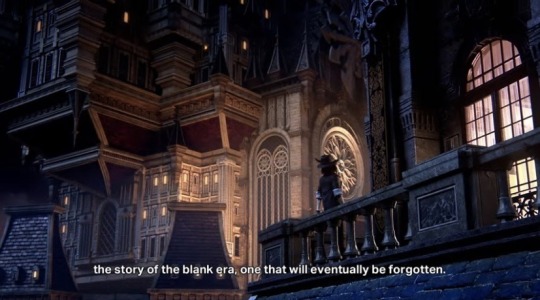
Nomura is so obsessed with important things being forgotten tho
Memory is a sand castle at the local park and he is repeatedly stomping on it with his foot
#kingdom hearts#em talks#like chain of memories?? xion?? now this?#tbh I think the kids need an actual history lesson I doubt any of them know about the age of fairytales outside of#there was once a keyblade war
73 notes
·
View notes
Text
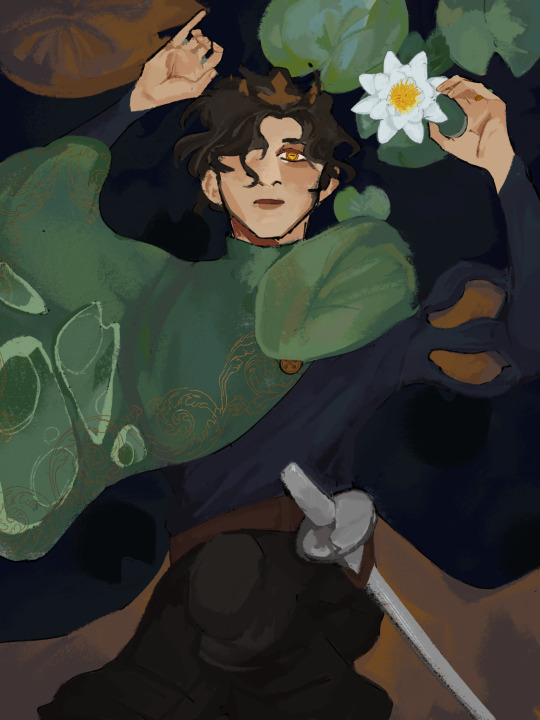
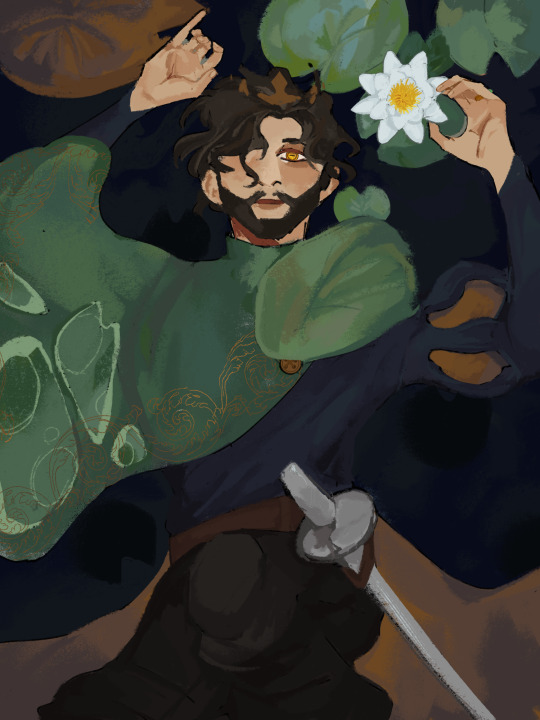
prince consort gerard of greenleigh, formerly a frog, and soon to be a frog again
#d20#d20 neverafter#prince gerard of greenleigh#prince gerard#neverafter#frog man#divorcee#as i said in my wip post#I’m a total sucker for romance and I really hope he and his wife reconcile as he realizes his errors in being a supportive#selfless husband#even better I hope that Elody kills the snow queen and goes back to look for her husband#bc she genuinely cares and still loves him#but he wasn’t made for war and now they can have a candid conversation without the war in the way#anyway she sees him and what his doubt and buried self loathing and selfishness has had him become again#they talk and make up#yknow#the stuff of healthy relationship fairytales#I saw someone tag my post about them thinking Gerard would look like murph and i agree but a) let me draw this twunk in peace#and b) I will not make murph fanart. yet. maybe.
479 notes
·
View notes
Text
i think the Jedi-Positive and Jedi-Critical stances can be summed up on whether you value authorial intent or authorial execution.
Most of the Jedi-Positive people I follow quote George Lucas and director commentaries to prove their points, as well as utilize analyses from others at LucasFilm that have to keep the general status quo. It's all based on what Lucas was trying to portray, while ignoring the product in execution.
The Jedi-Critical stance tends to look at the prequel execution, and they question the obvious uncomfortable moments that have real-life parallels to atrocities. They tend to be more Legends fans, whose writers actually delved into the terrifying implications. It's all on criticizing execution while disregarding intent.
Like, take the argument about Jedi children. A Jedi-Positive person would argue that all the children are all given up with consent from their parents; this is what I am sure Lucas was intending to portray. A Jedi-Critical person will look at this and go "wait. how much 'consent' was in this encounter? the government can legally take these kids and have a representative show up to a farmer's house and tell the farmer they can technically say no? that is some bullshit." And there is real-life evidence for this. It's more on the execution.
Or the argument about love. Jedi-Positive people turn to Lucas's interview to show that they really meant it in the Buddhist sense, and if you value intent that works. Jedi-Critical people would argue that the marketing states that the Jedi cannot love, and nothing in the movies states that the Jedi meant non-toxic love when they eschew attachments.
They're both valid positions, but I think a lot of fandom brutality comes from not understanding either view, or demeaning one view in favor of another. It's perfectly acceptable to value one over the other.
#star wars#starwars#jedi#jedi order#the jedi order#star wars meta#sw fandom meta#sw#sw prequels#sw fandom#pro jedi#anti jedi#jedi critical#jedi positivity#I also think a lot of it is also based on filters as well#but i didn't want to crowd the post#lucas used a fairytale structure to write his story#but there's still a huge portion of deconstruction in canon stuff#maybe i'll write more
287 notes
·
View notes
Text
The way everyone acts about the supposed "daemyra downfall" in season 2 reminds me of all the losers that were saying Daemon will cheat on her with Mysaria in ep. 8 from season 1 based on a single second from a trailer. And yet...

#like obviously we'll have to wait and see#and ofc there's a war so naturally there won't be any fairytale marriage#but giving that we have no context for the scene this behaviour is hysterical to me#you know that trailers are purposely misleading#right?#daemyra
20 notes
·
View notes
Photo


Checking one off the list! This is a fairytale AU of The Snow Queen, in which Mayday melts the splinters of the troll-mirror lodged in Crosshair’s heart.
#the bad batch#tbb#star wars#sw tbb#bad batch bingo#badbatchbingo23#commander mayday#crosshair#ct 9904#fairytale au#the snow queen#the bad batch spoilers
261 notes
·
View notes
Text

Feemor has his father's appearance, but his mother's heart.
#he's just a normal guy with parent's that are a space ghibli fairytale come to life#random boli thoughts#my art#i cant wait until i finish the ficlet about how he finds his crystal#he's so dear to my heart#as are audunn and najm (as i've called the parents)#star wars#art for my fic#feemor
35 notes
·
View notes
Text
𝖊𝐥𝐞𝐜𝐭𝐫𝐢𝐜 𝖘𝐩𝐚𝐫𝐤𝐬, 𝘁𝗵𝗲 𝗯𝗮𝗱 𝗯𝗮𝘁𝗰𝗵
𝖊𝐥𝐞𝐜𝐭𝐫𝐢𝐜 𝖘𝐩𝐚𝐫𝐤𝐬
❝ 𝗮𝗿𝗲 𝘆𝗼𝘂 𝗿𝗲𝗮𝗱𝘆 𝗳𝗼𝗿 𝘁𝗵𝗶𝘀? ❞
𝐢𝐧 𝐰𝐡𝐢𝐜𝐡 a senator decides her life needs a bit of spice so she embarks on an adventure. unwillingly, of course.
the bad batch x fem!oc
all seasons
in progress
All Rights Reserved to me
next


☁️.ᐟ
જ⁀➴ 𝖊𝐥𝐞𝐜𝐭𝐫𝐢𝐜 𝖘𝐩𝐚𝐫𝐤𝐬
❝ the bad batch ❞
༘⋆
i fell in love with
your chaos

༘⋆
𝐢𝐧 𝐭𝐡𝐞 𝐧𝐢𝐠𝐡𝐭,
𝐮𝐧𝐝𝐞𝐫 𝐧𝐞𝐨𝐧 𝐥𝐢𝐠𝐡𝐭𝐬
⌞𝐬𝐲𝐧𝐨𝐩𝐬𝐢𝐬⌝
❝ 𝐖𝐇𝐄𝐍 𝐀 𝐒𝐄𝐍𝐀𝐓𝐎𝐑 starts to bite off more than she can chew, it's up to The Bad Batch to come to her rescue. Well, that's the shorter version. In actuality, a senator had decided to scope 79's for information about Clone Rights, and accidentally managed to put herself on Rampart's radar. This began the domino effect of assassins, bounty hunters and annoying opposing senators to try and retrieve her head on a silver plater. Now she must rely on faith, trust and a little bit of clone commandos in order to survive her new life while she hides some life-threatening information that demands that she keep her head down. ❞
.𖥔 ˖ 𝐲𝐨𝐮'𝐫𝐞 stuck with us for the long run

𝐬𝐨 strap in and see if you can keep up ˖ 𖥔.
cast ⚔ .ᐟ
𝗵𝗼𝗹𝗹𝗮𝗻𝗱 𝗿𝗼𝗱𝗲𝗻 𝐚𝐬 𝘀𝗼𝗸𝗮𝗻𝗮𝗿𝗮 𝘁𝗮𝗻𝗼𝗯𝗶

... 𝗮𝗻𝗱 𝗲𝘃𝗲𝗿𝘆𝗼𝗻𝗲 𝗲𝗹𝘀𝗲 𝗮𝘀 𝘁𝗵𝗲𝗺𝘀𝗲𝗹𝘃𝗲𝘀
ᯓ★
a/n: omg im so excited to finally get this series (book) out. ive been working on it for EONS and havent had the time to just sit down and just edit and finish writing.
but omg
the intro is finally out.
at the moment i am writing this, the ending to s3 of tbb hasnt come out yet, so i cant determine if there will be angst in this series yet. this is my comfort writing fic and tbh i dont really want to write angst, but if it comes to it in the show, expect that there will be.
omg the graphics are so bad but they took so long so im fine with them for now😭😭
please dont let this flop <3., and if you want to be notified when the official chapters are out, just comment ur username below and say "i want to be notified". ty !
𝖊𝐥𝐞𝐜𝐭𝐫𝐢𝐜𝖘𝐩𝐚𝐫𝐤𝐬.

#star wars#tbb#soka writes things#tbb echo#fanfic#fairytale library#soka-writes-things#star wars fanfiction#tbb crosshair#tbb fanfiction#tbb hunter#tbb omega#sokanara tanobi#tbb wrecker#tbb batcher#tbb tech#electric sparks
18 notes
·
View notes
Text
Anakin truly set out the goal to marry Padmé as soon as he first laid his eyes on her. He didn't even interact with her that much to come to the conclusion that he wanted to wed her. As soon as they met again 10 years later, he wasted no time and put a ring on that finger. They didn't even take at least a month; they went straight to marriage. Their romance is essentially a Disney fairytale 😅❤️
#anakin skywalker#padme amidala#star wars#pt#meta#sw meta#txt#my characters differ from them in many ways but they too got married just a week after meeting each other#it was love at first sight#anakin had love at first sight padme didn' for obvious reasons but she still developed a fondness for anakin#it wasn't until anakin was already an adult that she went “oh damn you are hot now”#mine originally met each other as children (of the same age) but i eventually decided to change it to when they were already in their 20's#he is 3 years older than her. i changed it to make it even more fairytale-ish#they are the only couple in my story that experienced love at first sight#the rest have a more “realistic” approach to romance and took their time until they decided to get married#but these two? oh yeah they got married even though they just met#i know elsa would reprimand my oc for marrying a man she just met but i'm sorry but he is fine af and would do anything for anybody#it's a fairytale it's not meant to be taken literally in many ways#it's not a realistic depiction of reality but it teaches you about reality it's meant to be a metaphor more than anything#i went off a tangent again but yes#anakin and padme's relationship is essentially a fairytale#star wars is a fairytale it contains a good chunk of the elements. it's just deeper more detailed and extensive but the core is the same#anyway ramble over
34 notes
·
View notes